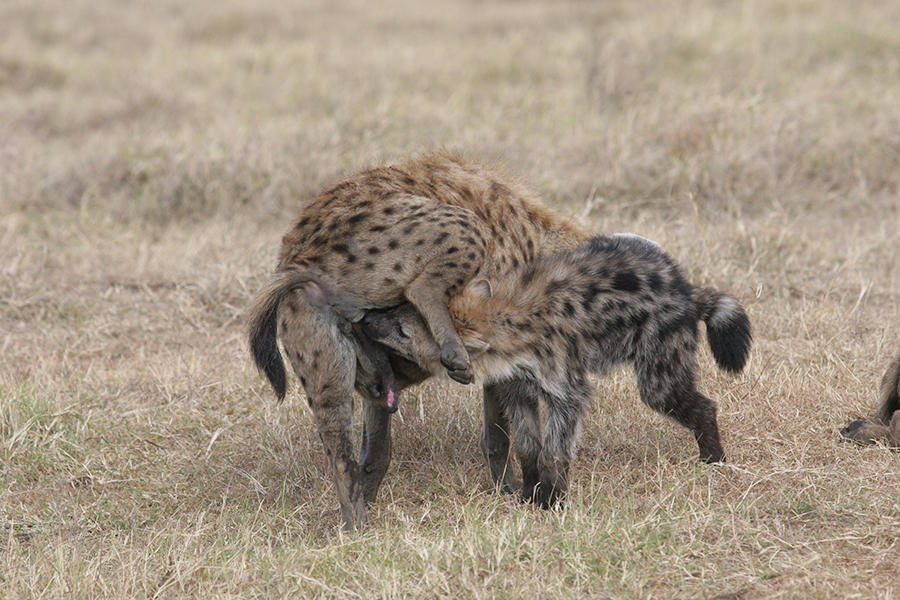You are here
Hyena Girl Power Explained
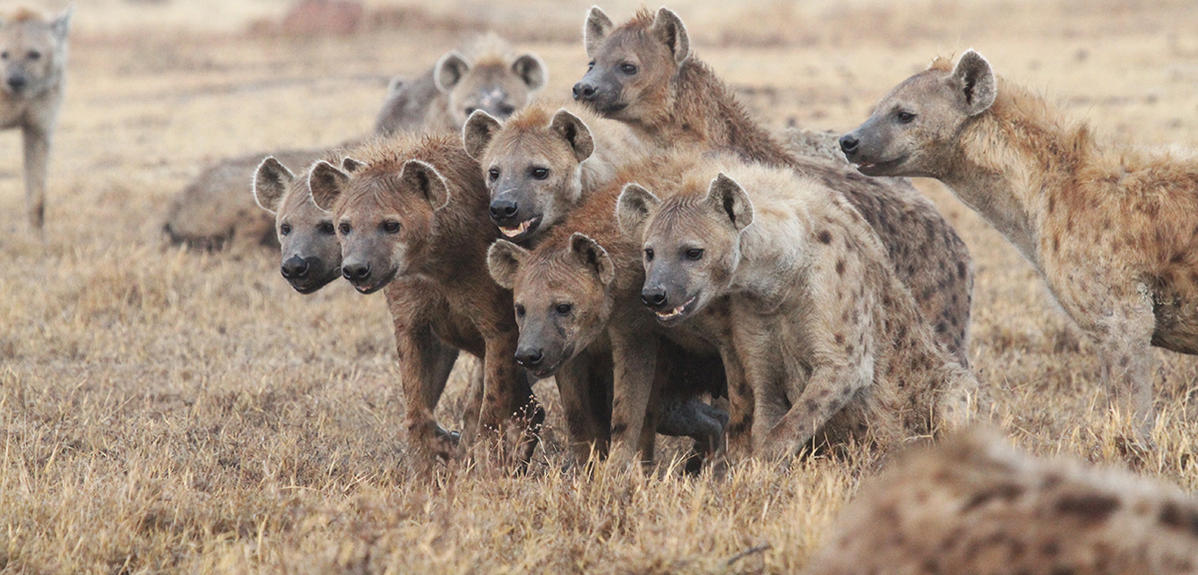
Female dominance in certain animal communities stands out as a curious reversal of the roles that we humans, widely and traditionally, are familiar with. This is the case of clans of spotted hyenas, habitually led by females who get first dibs on resources like food, shelter or mating partners. Until now, this female supremacy has generally been put down to the virile attributes and behavior of high-ranking she-hyenas. A view now overturned by a new study based on twenty plus years of data on Tanzanian spotted-hyena clans. By analyzing the outcomes of one-on-one conflicts among these hyenas, the Franco-German research team has come up with the first-ever empirical evidence that ruling female individuals don’t owe their top-dog status to their resemblance to males—or even their gender—but most critically, their connections with and spatial proximity to other clan members.1
Since 1996, the Ngorongoro Hyena Project—initiated by scientists from the Leibniz Institute for Zoo and Wildlife Research in Berlin, Germany—has been monitoring eight clans of spotted hyenas, each numbering up to 130 members at a time, and inhabiting the Ngorongoro Crater in northern Tanzania. One by one, each animal has been identified by its unique spot patterns, its sex determined, its parentage established by DNA testing, and its social rank detected by shows of either subordination or dominance. A wealth of genetic-pedigree and life-history data that makes the project one of the world’s most comprehensive long-term studies of free-ranging mammal populations.
While the project has long observed female ascendancy over male hyenas, no study ever conclusively explained the phenomenon. So the question remained: is this dominance really due, as many assume, to the intrinsic physical or behavioral attributes of ruling females, such as greater size, muscle power, or aggressiveness? Granted, females are generally slightly larger than males, and even resemble them to the point of having masculinized external sexual organs—a “pseudopenis” merging reproductive and urinary functions, as well as a tissue-filled “pseudoscrotum.” However, having also noted the importance of social support in hyena hierarchy, the project researchers followed a hunch to consider it in an empirical study of the factors behind an individual’s authority.
To conduct their study, the researchers needed appropriate analysis tools. Enter François Rousset of the ISEM,2 an expert in population genetics, a branch of evolutionary biology that has notably spawned mathematical models tracing the evolution of dominance in a given population. The German team called on the CNRS researcher to help develop statistical methods to gauge the impact of social support on the outcome of conflicts between pairs of hyenas where one animal emerged as a winner (aggressive lunging, chasing, biting, pushing), the other a loser (submissive retreating, cowering, ears down, tail between legs). Rousset explains that “in order to distinguish the influence of social support from that of body mass or sex, it’s necessary to consider them together through statistical analysis.” Which is what the team did, drawing on data from 4133 interactions between 1996 and 2017 involving 748 hyenas of known body mass and sex.
To take into account social support, the researcher relied on the “use of the population’s pedigree to make predictions.” In this way, the team banked on its knowledge of hyena kinship rules and coalition patterns to estimate the social support lent to individuals in the case of intraclan conflicts. As for interclan conflicts, social support was detected from the animal’s geographical proximity to its own clan during the encounter. On top of these measurable determinants, the team allowed for additional unknown factors to impact on dominance. “We can take unobserved factors into account by predicting them. The software I developed offers great flexibility by letting users feed it with the correlation pat-terns that they expect for these unobserved factors.”
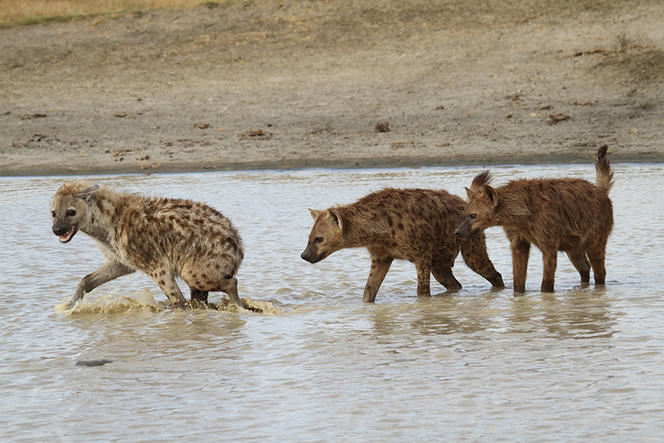

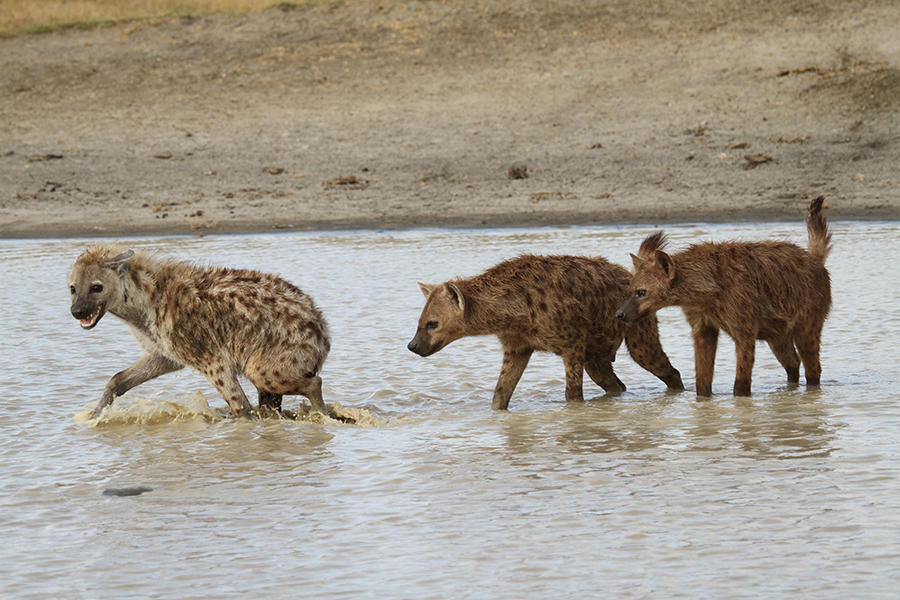
The team’s analysis of conflict outcomes, whether intraclan or interclan, made one thing clear. “Social support is the key determinant of an individual’s success in a conflictual interaction,” states Rousset. While results confirmed the team’s prior suspicions that social support played a role, more surprising was the overwhelming extent to which it does. Indeed, when two hyenas clash, the difference in the level of social support each already has is a highly reliable factor for determining the winning hyena, irrespective of its sex or body size. In contrast, “body mass has practically no impact” on a hyena’s chances of winning. Interestingly, the other variable examined, gender, may have an influence—but only insofar as a hyena’s sex is related to the social support it can muster. Sex alone, however, is not reason enough for a hyena to win.
The CNRS researcher goes on to explain that in the clan context, “females dominate when they have more social support, which is generally the case, because they practically never migrate between social groups, unlike males.” Boosted thus by the support they glean from their social and kinship ties—notably with other females that have similarly stayed put in the clan, but also male relatives who haven’t moved on—she-hyenas have higher chances of becoming leaders. Males, on the other hand, tend to disperse and migrate away from the clans they’re born into, thus breaking off social ties with their families. In the absence of their biological support networks, such males are less likely to climb up the social ladder.
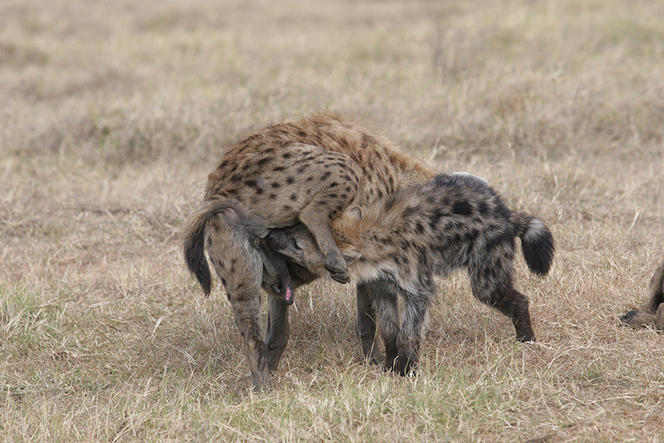
With female dominance proving to be a matter of who you know rather than what you are among hyenas, Rousset expects similar results from other species. “This is the first study to formally test the impact of social support on the dominance of individuals, but there’s every reason to believe that the same evolutionary mechanisms operate in animal societies where individuals develop long-term social links and are at least partially aware of their kinship ties. In animal populations, it’s common for the individuals of one sex rather than the other to disperse, in which case social support can explain one sex dominating over another.”
- 1. C. Vullioud, E. Davidian, B. Wachter, F. Rousset, A. Courtiol & O.P. Höner, “Social support drives female dominance in the spotted hyaena,” Nature Ecology & Evolution, 2018. DOI: https://doi.org/10.1038/s41559-018-0718-9(link is external)
- 2. Institut des Sciences de l’Evolution de Montpellier (CNRS / Université de Montpellier / Institut de Recherche pour le Développement / Ecole Pratique des Hautes Etudes).
Author
As well as contributing to the CNRSNews, Fui Lee Luk is a freelance translator for various publishing houses and websites. She has a PhD in French literature (Paris III / University of Sydney).




